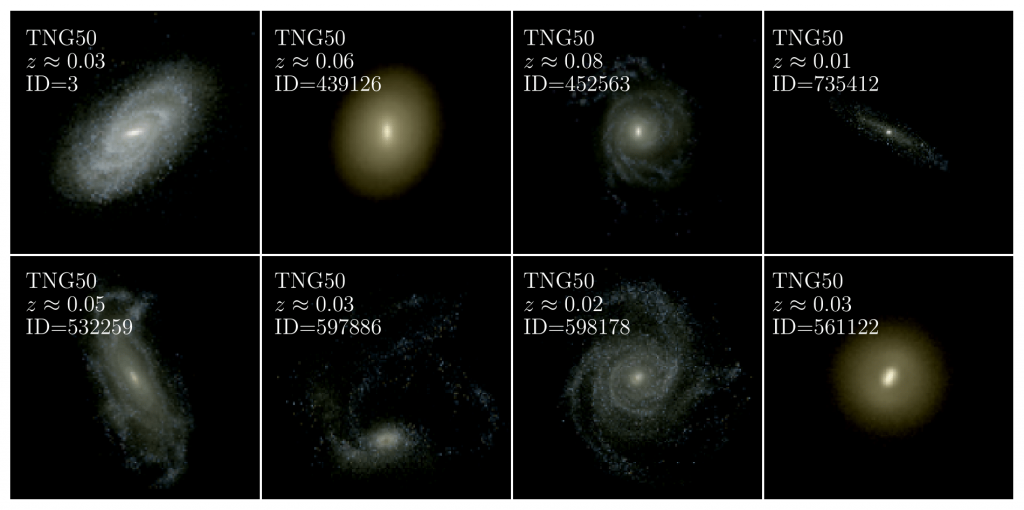iMaNGA: mock MaNGA galaxies based on IllustrisTNG and MaStar SSPs. -- III. Stellar metallicity drivers in MaNGA and TNG50
The iMaNGA project uses a forward-modelling approach to compare the predictions of cosmological simulations with observations from SDSS-IV/MaNGA. We investigate the dependency of age and metallicity radial gradients on galaxy morphology, stellar mass, stellar surface mass density ($\Sigma_*$), and environment. The key of our analysis is that observational biases affecting the interpretation of MaNGA data are emulated in the theoretical iMaNGA sample. The simulations reproduce the observed global stellar population scaling relations with positive correlations between galaxy mass and age/metallicity quite well and also produce younger stellar populations in late-type in agreement with observations. We do find interesting discrepancies, though, that can inform the physics and further development of the simulations. Ages of spiral galaxies and low-mass ellipticals are overestimated by about 2-4 Gyr. Radial metallicity gradients are steeper in iMaNGA than in MaNGA, a discrepancy most prominent in spiral and lenticular galaxies. Also, the observed steepening of metallicity gradients with increasing galaxy mass is not well matched by the simulations. We find that the theoretical radial profiles of surface mass density $\Sigma_*$ are steeper than in observations except for the most massive galaxies. In both MaNGA and iMaNGA [Z/H] correlates with $\Sigma_*$, however, the simulations systematically predict lower [Z/H] by almost a factor of 2 at any $\Sigma_*$. Most interestingly, for galaxies with stellar mass $\log M_*\leq 10.80 M_\odot$ the MaNGA data reveal a positive correlation between galaxy radius and [Z/H] at fixed $\Sigma_*$, which is not recovered in iMaNGA. Finally, the dependence on environmental density is negligible in both the theoretical iMaNGA and the observed MaNGA data.
PDF Abstract